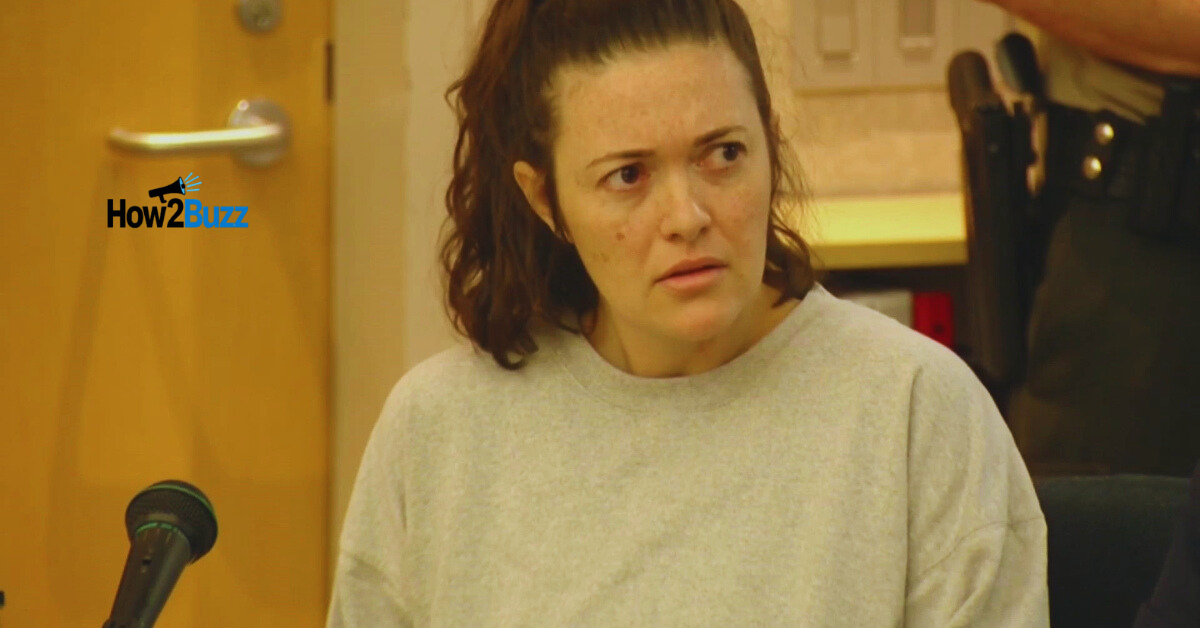Jade Janks has become a name that echoes through news headlines and courtroom summaries. Her case isn’t just another criminal story—it dives deep into the complexity of personal trauma, digital violations, and the often-overlooked darker corners of our digital lives. The story revolves around shocking events, unexpected discoveries, and legal twists that have captivated people far beyond Southern California.
What makes the story of Jade Janks so compelling is that it touches on multiple themes at once: privacy invasion, the emotional toll of betrayal, and the limitations of the justice system in navigating modern tech-fueled crimes. This case serves as both a cautionary tale and a call to examine how our legal and ethical standards keep pace with today’s realities.
Jade Janks and the Shocking Discovery That Changed Everything
The name Jade Janks came into the national spotlight after a disturbing incident involving her stepfather. It all started when she discovered hundreds of explicit images of herself on his computer—images she never consented to being taken or saved. That discovery reportedly turned her world upside down and led to a legal drama that captured media attention.
Janks found these images while cleaning out her stepfather’s belongings as he was hospitalized. The emotional shock of seeing her private photos archived without her knowledge pushed her into a psychological state of betrayal and trauma. In interviews and court reports, experts pointed out how such violations can have long-lasting effects, especially when the perpetrator is someone close to you.
Jade Janks and the Crime That Followed Her Discovery
Jade Janks soon became a defendant in a criminal trial following the death of her stepfather, Tom Merriman. Prosecutors claimed that she orchestrated his murder after finding the explicit photos, though the defense argued that his death resulted from an accidental overdose. The narrative quickly evolved from a privacy violation to a murder mystery, with public opinion split down the middle.
What complicated things further was the digital evidence presented during the trial. Text messages, search histories, and social media activity became central pieces of evidence, painting a complex picture of intent, emotion, and action. In the age of digital footprints, every click and message can potentially sway a jury, which made this case all the more fascinating and intense.
Jade Janks and the Legal Battle That Gripped the Nation
The courtroom was a battleground not just of facts but of emotions. Jade Janks’ defense painted her as a victim of a deeply personal violation, driven to the edge by the discovery of photos that no one should ever have to find. On the other side, the prosecution argued that she took justice into her own hands, turning a personal tragedy into a criminal act.
The jury had a tough job. While many empathized with her emotional turmoil, they also had to consider the legality of her actions. The trial highlighted how complex legal decisions become when personal trauma and intent are involved. In many ways, the outcome has fueled discussions on whether current laws truly address the nuances of emotional and digital abuse.

Public Reactions and Media Frenzy Surrounding the Jade Janks Case
From the very beginning, media outlets jumped on the Jade Janks story, turning it into a high-profile case. Social media buzzed with hashtags, Reddit threads lit up with theories, and YouTube commentary channels analyzed every courtroom moment. It wasn’t just a crime story—it was a cultural phenomenon.
The reactions were polarized. Some saw her as a tragic figure—a woman pushed beyond her breaking point. Others viewed her actions as premeditated and dangerous. The media coverage often reflected these dualities, swinging between sensationalism and sympathy, showing how public opinion can shape the perception of justice.
Digital Privacy and Emotional Boundaries in the Jade Janks Narrative
One of the most overlooked but important aspects of the Jade Janks case is what it tells us about digital privacy and emotional boundaries. The incident highlights how easy it is to exploit someone’s digital identity, especially when trust is involved. The idea that someone close to you could save your most vulnerable images without consent is horrifying, yet it happens more often than many realize.
The legal system still lacks comprehensive frameworks to deal with these new-age violations. In Jade’s case, while the focus was primarily on the physical crime, the emotional and psychological abuse she experienced deserves its own courtroom attention. This case could be the catalyst for new legislation around digital consent and personal image rights.
The Psychological Toll of the Jade Janks Experience
Mental health experts weighed in heavily on the case, especially regarding the psychological damage someone might suffer from such a betrayal. Discovering non-consensual images can trigger a cascade of emotional reactions—rage, confusion, guilt, and even self-blame. For Jade Janks, the trauma wasn’t just from the photos; it was from the person who had saved them.
Clinical psychologists have pointed out that people in such situations often feel powerless. That sense of helplessness can manifest in dangerous ways if not addressed properly. Janks’ case stands as a powerful reminder of the importance of accessible mental health support, especially in emotionally complex legal situations.
The Justice System’s Limitations Exposed by the Jade Janks Case
Another takeaway from the Jade Janks trial is the limitations of the justice system when it comes to addressing crimes that don’t fit neatly into black-and-white categories. The court system is good at dealing with straightforward cases—but this wasn’t one of them.
This case involved technology, emotional trauma, and moral gray areas. It exposed how our legal system still struggles with digital privacy issues and how they intersect with real-world actions. The outcome left many wondering: could there have been a different path—one that acknowledged both the trauma and the crime in a more balanced way?

Lessons Learned from the Jade Janks Case
Whether you sympathize with Jade Janks or believe justice was served, one thing is clear: her case has opened the door for larger conversations. Topics like digital consent, emotional abuse, and justice reform are now front and center in ways they weren’t before.
It also forces us to ask harder questions. How should we respond to someone who has suffered extreme emotional harm? Is there a difference between justice and revenge? Can the court system adapt quickly enough to address issues born out of our increasingly digital world?
The Aftermath and Ongoing Impact of Jade Janks’ Story
Even after the trial, Jade Janks’ name continues to make headlines. Documentaries are in the works, podcasts are analyzing her every move, and legal analysts are citing her case in discussions about legal reform. The ripple effect is real, and it’s continuing to grow.
More importantly, her story has resonated with people who have experienced similar emotional or digital violations. For them, Jade’s case is more than a courtroom drama—it’s a mirror reflecting their own pain and a reminder that their stories matter, too. And perhaps that’s the real legacy of this case: it gave voice to those who often remain silent.
Frequently Asked Questions about Jade Janks
Who is Jade Janks?
Jade Janks is a California woman who came into national attention after being accused and later convicted in connection to the death of her stepfather, following her discovery of explicit, non-consensual photos of herself on his computer.
What was the outcome of Jade Janks’ trial?
Jade Janks was found guilty, with the court ruling that her actions led to the death of her stepfather. However, the case remains controversial due to the emotional and psychological factors involved.
Why is Jade Janks’ case considered significant?
It highlights the urgent need for better digital privacy laws and shines a light on how emotional trauma can influence behavior. The case has triggered broader conversations about justice, consent, and technology.
What did Jade Janks discover that led to the trial?
She found a large collection of explicit images of herself on her stepfather’s computer, which she had no idea were saved. This discovery reportedly led to emotional distress and ultimately the events that followed.
Is there public support for Jade Janks?
Yes, there is a significant portion of the public that sympathizes with her due to the emotional trauma she endured. Others, however, view the case through a strict legal lens and support the conviction.
Conclusion
The story of Jade Janks is more than just a courtroom saga—it’s a modern tale about privacy, betrayal, and justice in the digital age. Her case shows just how emotionally complex and legally challenging modern crimes have become, especially when personal relationships and digital violations intersect. While the legal outcome has been decided, the conversation is far from over. The questions raised by her story will continue to echo in discussions about legal reform, emotional justice, and the ever-blurring line between victim and perpetrator.
In many ways, Jade Janks has unintentionally become a symbol—not of guilt or innocence, but of how fragile and complicated the human experience can be in the modern world.



